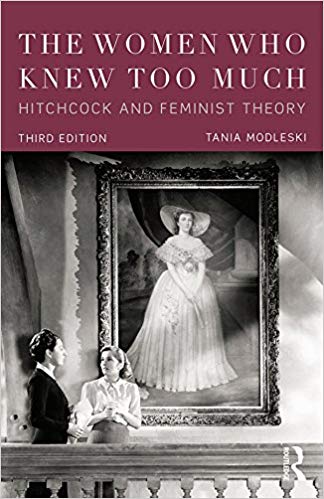150
Most of Vertigo is shot in the Hollywood style, in which the point of view moves back and forth according to the narrative rhythm of the scene. There are a number of subjective shots when the detective, Scottie, is trailing Madeleine, whose strange behavior he has been asked to investigate. Here the subjective camera represents the detective as voyeur: we see what Scottie sees as both he and we try to make sense of Madeleine's actions. Inevitably Scottie cannot remain a voyeur, an outside observer; he must be drawn into the action as he intervenes to save her from drowning.
Most of Vertigo is shot in the Hollywood style, in which the point of view moves back and forth according to the narrative rhythm of the scene. There are a number of subjective shots when the detective, Scottie, is trailing Madeleine, whose strange behavior he has been asked to investigate. Here the subjective camera represents the detective as voyeur: we see what Scottie sees as both he and we try to make sense of Madeleine's actions. Inevitably Scottie cannot remain a voyeur, an outside observer; he must be drawn into the action as he intervenes to save her from drowning.
The Women Who Knew Too Much: Hitchcock and Feminist Theory
Author: Tania Modleski
Year: 1998 Edit Add
Book: Remediation
The Women Who Knew Too Much: Hitchcock and Feminist Theory
Author: Tania ModleskiYear: 1998 Edit Add
Book: Remediation
Whether the style is somehow natural or whether we are culturally determined to read it as natural is not the question. In either case, the style is transparent for Western viewers. Furthermore, as Laura Mulvey (1989) has argued, the shifting point of view encourages us (or at least male spectators) to be drawn into the film and to identify with the main character, in this case the detective himself, in his sco philic relationship to the woman (cf. Modleski 1998, 87-100).
Whether the style is somehow natural or whether we are culturally determined to read it as natural is not the question. In either case, the style is transparent for Western viewers. Furthermore, as Laura Mulvey (1989) has argued, the shifting point of view encourages us (or at least male spectators) to be drawn into the film and to identify with the main character, in this case the detective himself, in his sco philic relationship to the woman (cf. Modleski 1998, 87-100).
 Source type: picture
Source type: pictureInfo: Tania Modleski, The Women Who Knew Too Much: Hitchcock and Feminist Theory
Original size: 324x499 px. Edit
The Arrival of a train at the la Ciotat Station
Author: Lumières brothers
Year: 1895 Edit Add
Book: Remediation
The Arrival of a train at the la Ciotat Station
Author: Lumières brothersYear: 1895 Edit Add
Book: Remediation
In 1895 the Lumière brothers showed as one of their films in the Grand Café, The Arrival of a Train at the La Ciotat Station. The story is that audience members were so taken with the reality of the moving image of the train that they panicked and ran from the room. This would seem to be a perfect example of film as a transparent medium, but it also helps us to understand the subtle ways in which the logic of transparency can sometimes operate.
In 1895 the Lumière brothers showed as one of their films in the Grand Café, The Arrival of a Train at the La Ciotat Station. The story is that audience members were so taken with the reality of the moving image of the train that they panicked and ran from the room. This would seem to be a perfect example of film as a transparent medium, but it also helps us to understand the subtle ways in which the logic of transparency can sometimes operate.
File type: video
Edit Delete
Info: Auguste and Louis Lumière, L'Arrivée d'un Train à la Ciotat, 1895
The first public exhibition of motion pictures occurred on 28th December 1895 when August Lumière and Louis Lumière (the Lumière Brothers) exhibited a selection of ten of their single-reel films to a paying audience at a Parisian cafe. 'Arrival of a Train at La Ciotat' is considered to be the first motion picture in modern history (altough more an experiment from the Lumière-brothers to use their 'invention' of film, it shows a train arriving at a passenger station). Popular legend has it that, when this film was shown, the first-night audience fled the cafe in terror, fearing being run over by the "approaching" train.
Most of the cast were members of the Lumière family and employees from the Lumière factory.
Original Url: https://www.youtube.com/watch?v=1dgLEDdFddkEdit Delete
 Log-in
Log-in


